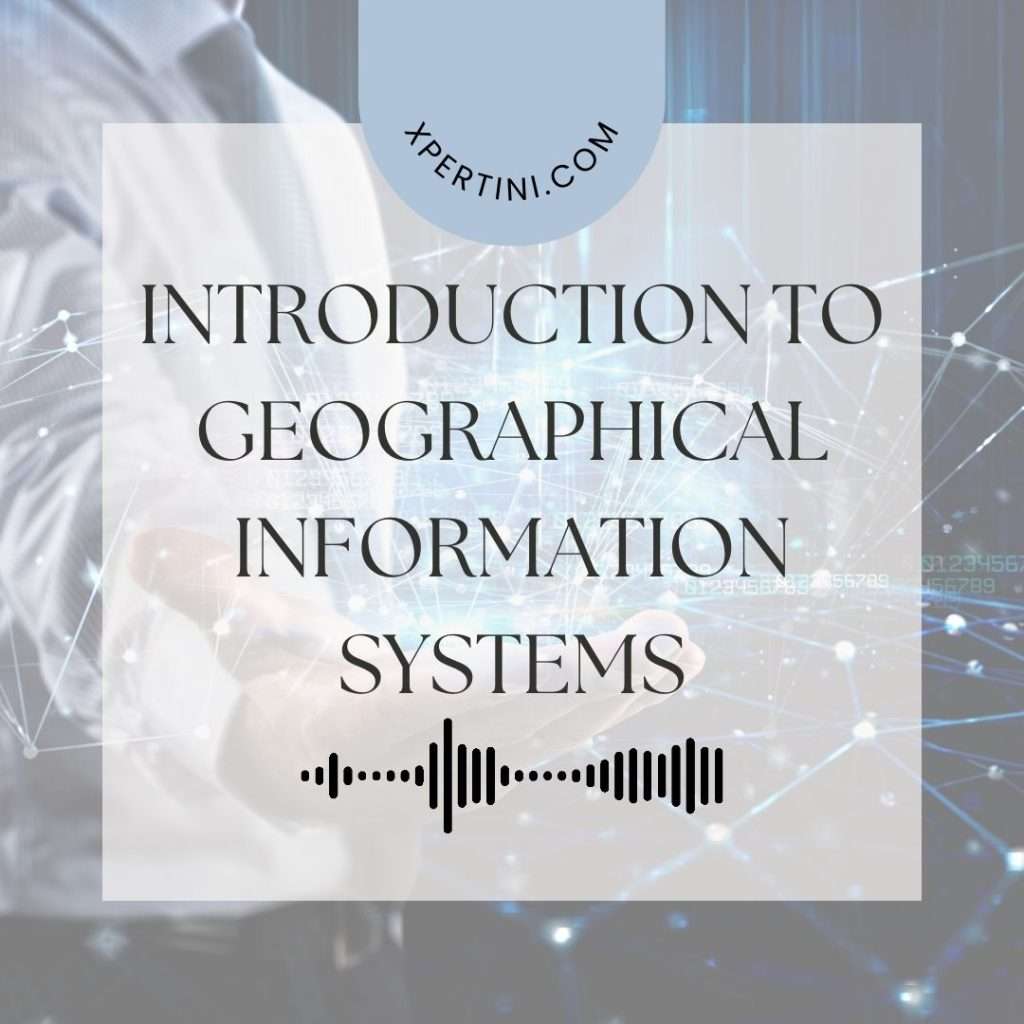Introduction to Geographical Information System
Course Summary
Unlock the power of Geographical Information Systems (GIS) with our comprehensive course. Delve into spatial data analysis and decision-making through a structured exploration of fundamental concepts and practical applications.
Discover the evolution of GIS technology, tracing its historical milestones and understanding its pivotal role in shaping various industries. From acquiring spatial data through diverse sources to mastering spatial data models and structures, this course equips you with the tools to navigate the landscape of GIS.
Through practical experiences with GIS software, you’ll develop proficiency in data manipulation, visualization, and spatial analysis techniques. Dive deep into overlay analysis, spatial interpolation, and cartographic design principles to craft compelling thematic maps that convey insights with clarity and precision.
Explore real-world applications of GIS across diverse fields such as environmental management and urban planning, gaining insights into how GIS transforms data into actionable intelligence. Uncover advanced topics including remote sensing and spatial modeling, elevating your skill set to meet the demands of complex spatial analysis tasks.
As you progress, you’ll cultivate critical thinking skills to assess ethical implications and collaborate effectively within multidisciplinary teams. Whether you’re a seasoned professional or a budding enthusiast, this course prepares you for a spectrum of GIS-related careers, providing a solid foundation to thrive in this field.
Course Overview
This course provides an introduction to Geographical Information Systems (GIS) and its applications in various fields. Students will learn the fundamental concepts, tools, and techniques used in GIS, enabling them to understand spatial data analysis and decision-making processes.
Course Objectives
- Understand the basic principles and concepts of Geographical Information Systems (GIS).
- Gain functional experience with GIS software for data analysis and visualization.
- Explore the various applications of GIS in real-world scenarios.
- Develop skills in spatial data management, manipulation, and interpretation.
- Learn how to integrate GIS with other geospatial technologies.
- Understand the ethical and societal implications of GIS usage.
- Gain proficiency in creating maps and conducting spatial analysis.
- Explore advanced topics in GIS, such as remote sensing and spatial modeling.
- Collaborate effectively in multidisciplinary teams on GIS projects.
- Prepare for further studies or careers in GIS-related fields.
Course Outcomes
- Identify and describe key components of GIS software.
- Apply spatial analysis techniques to solve geographic problems.
- Evaluate the accuracy and reliability of spatial data sources.
- Design and create thematic maps for spatial data visualization.
- Integrate GIS with other geospatial technologies for data analysis.
- Analyze case studies to understand the applications of GIS in different industries.
- Develop critical thinking skills to assess the ethical implications of GIS usage.
- Demonstrate proficiency in using GIS software for data manipulation and interpretation.
- Collaborate effectively in teams to complete GIS projects.
- Present findings and recommendations from GIS analyses in clear and concise formats.
Course Audience
- Individuals interested in pursuing careers in GIS or related fields.
- Professionals seeking to enhance their skills in spatial data analysis and visualization.
- Students and researchers in environmental science, urban planning, geography, and other disciplines requiring spatial analysis capabilities.

